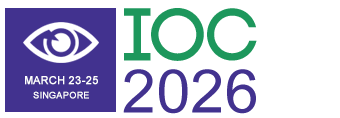Title : Rare and interesting case of Goldenhar’s syndrome in a 3 years old male child
Abstract:
It was an Austrian ophthalmologist, Maurice Goldenhar, who in 1850 first described a syndrome complex characterized by congenital presence of limbal dermoid with congenital associated presence of preauricular skin tag or appendage. Sometimes, there is presence of squint, anophthalmos, coloboma of the upper lid, iris, retina, astigmatism, microphthalmos, and blepharophimosis syndrome may be noted. However, it is rare. Goldenhar's Syndrome (GHS) is also termed as Oculoauriculovertebral syndrome and Craniofacial syndrome, involving the head, face, ear, nose, soft palate, and mandible. About 80–85% of GHS cases have normal visual and mental faculties. However, in 10–15% of cases, additional congenital anomalies occur due to incomplete development of the first and second branchial arches, which are associated with genetic defects but are not inherited in an autosomal dominant or recessive manner. Maternal gestational diabetes mellitus, or exposure of pregnant mothers in the first trimester to cytomegalovirus, rubella, herpes simplex, or intake of thalidomide, cocaine, or antibiotics, are risk factors.
In the 10–15% of cases where additional congenital anomalies are present, they manifest as facial asymmetry, harelip, cleft palate, kidney defects (such as double ureters and hydronephrosis), limb and spinal defects, congenital heart disease, orbital involvement, dental anomalies, hearing defects, impaired memory, intelligence, and mental faculties, as well as seventh nerve involvement and unilateral aplasia of trigeminal nuclei leading to trigeminal anesthesia. A full workup for such cases includes: Ultrasound of kidneys, X-rays of spine and limbs, Echocardiography, MRI of orbits, Dental assessment, EEG and Audiometry.
Keywords: Congenital Limbal Dermoid; Preauricular Skin Tag; Appendage; Squint; Anophthalmos; Coloboma; Upper Lid; Iris; Retina; Astigmatism; Microphthalmos; Blepharophimosis Syndrome; Facial Asymmetry; High-Arched Palate; Harelip; Cleft Palate; Double Ureters; Hydronephrosis; Limb And Spinal Defects; Congenital Heart Disease; Orbital Involvement; Dental Anomalies; Hearing Defects; Impaired Mental Faculties; Intelligence; Seventh Nerve Involvement; Trigeminal Anesthesia.




